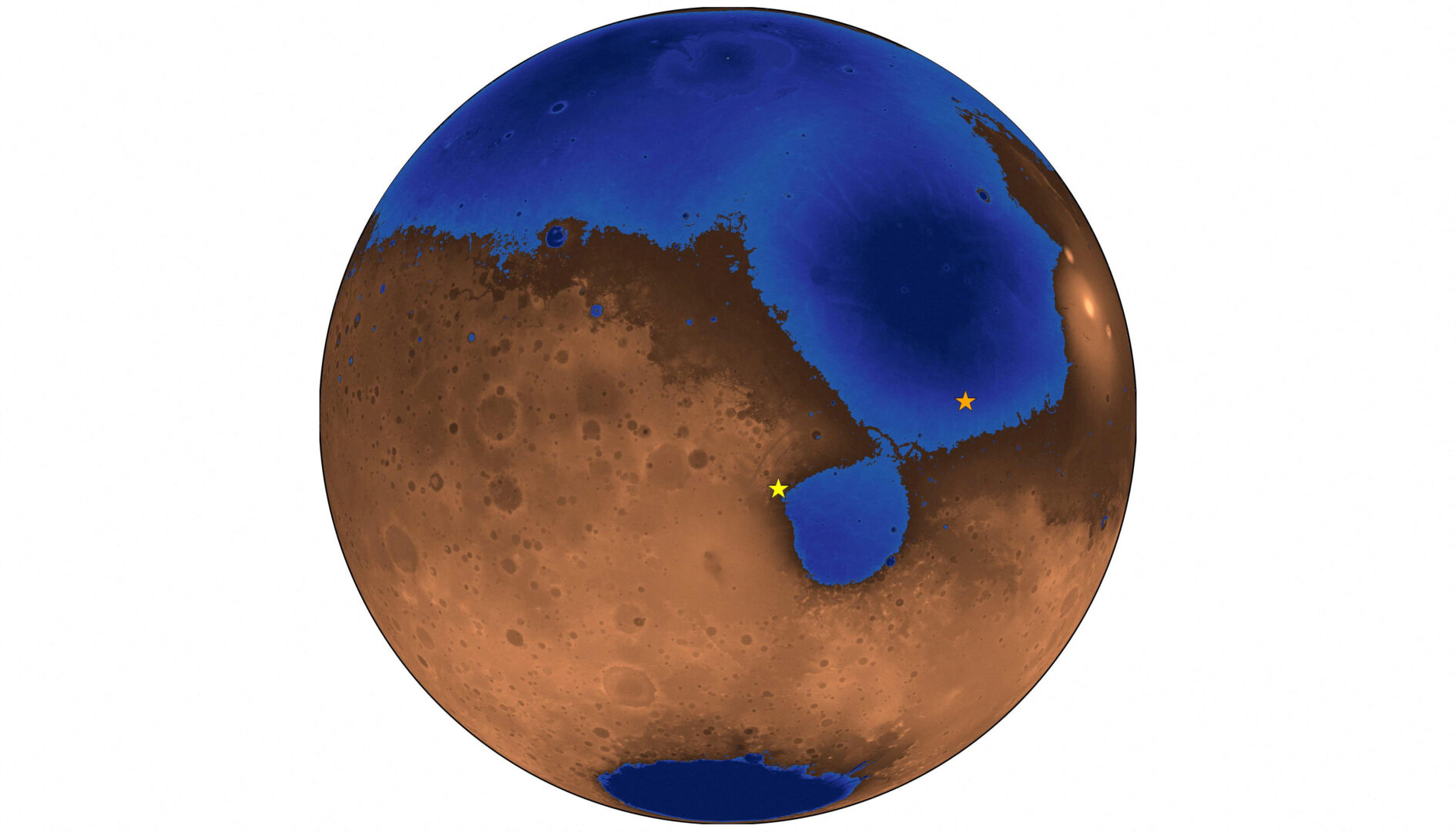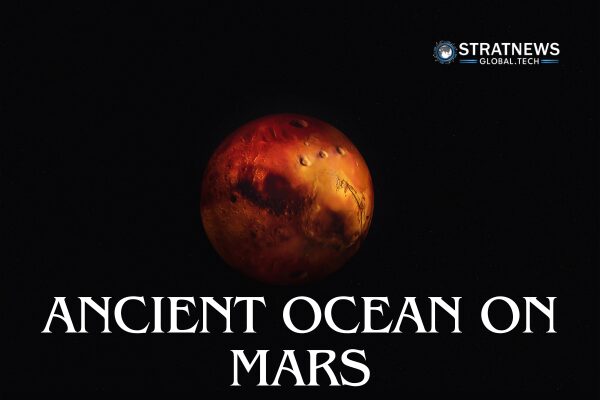Evidence of Ancient Ocean Shorelines Discovered Beneath Mars’ Surface
Ground-penetrating radar data from China’s Zhurong rover has revealed buried formations resembling sandy beaches, suggesting the presence of an ancient ocean on Mars. This discovery adds to growing evidence that a large body of water, called Deuteronilus, may have existed on the planet’s northern plains billions of years ago.
Signs of an Ancient Martian Ocean
The findings suggest that around 3.5 to 4 billion years ago, Mars had a thicker atmosphere and a warmer climate, potentially allowing an ocean to form. Scientists believe such a body of water could have provided conditions suitable for life, much like early Earth’s primordial seas.

The Zhurong rover, part of China’s Tianwen-1 mission, operated from May 2021 to May 2022, covering approximately 1.2 miles (1.9 km) in an area believed to be an ancient shoreline. Using ground-penetrating radar, the rover scanned up to 80 meters (260 feet) below the surface. The radar images revealed layered deposits buried 10-35 meters (33-115 feet) underground, sloping in a way similar to terrestrial beaches.
A Long-Lived Body of Water
According to the research team, these beach-like formations likely took millions of years to develop, suggesting that Mars had a large, persistent ocean with wave activity. The researchers ruled out alternative explanations such as wind-blown dunes, river deposits, or lava flows, as these features typically create different patterns.
“By using ground-penetrating radar, we found direct evidence of coastal deposits that weren’t visible from the surface,” said planetary scientist Hai Liu of Guangzhou University. “Such oceans would have profoundly influenced Mars’ climate, shaped its landscape, and created environments potentially suitable for life.”
Planetary scientist Michael Manga of the University of California, Berkeley, noted that shorelines are excellent places to search for evidence of past life. On Earth, life is believed to have first emerged in shallow water environments similar to these.
Buried Evidence Preserved Over Time
The Zhurong rover explored the southern part of Utopia Planitia, a vast plain in Mars’ northern hemisphere. The structures it detected had been buried over time by dust storms, meteorite impacts, or volcanic activity, preserving them from surface erosion.
Previous studies based on satellite images suggested possible shorelines on Mars, but these features could have been distorted by billions of years of wind erosion. However, the newly discovered deposits remain intact beneath the surface, providing a clearer picture of Mars’ ancient history.
A separate study last year, using seismic data from NASA’s InSight lander, indicated that a vast reservoir of liquid water might still exist deep underground. Scientists believe some of Mars’ ancient ocean water may have escaped into space, while a significant portion could remain trapped beneath the surface.
The findings, published in the Proceedings of the National Academy of Sciences, provide strong evidence that Mars once had a vast ocean—one that may have supported life in its distant past.
With inputs from Reuters


